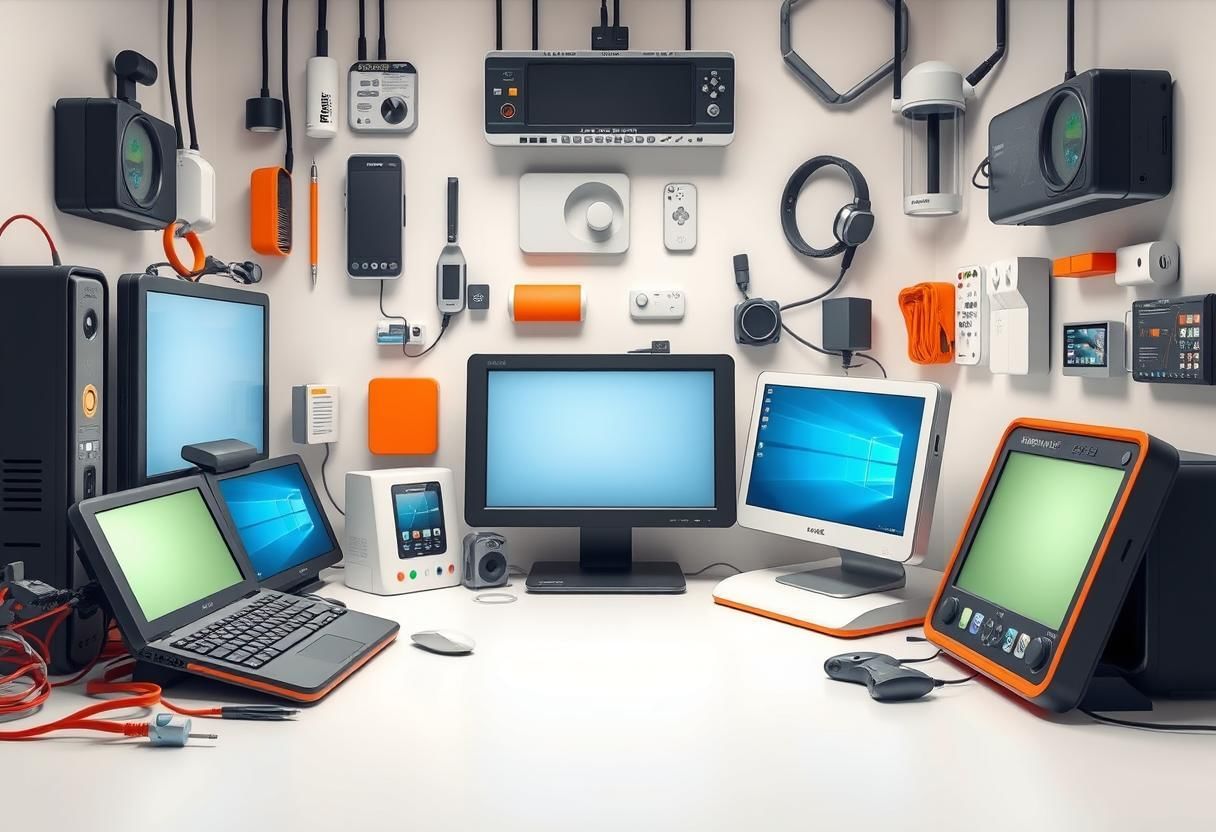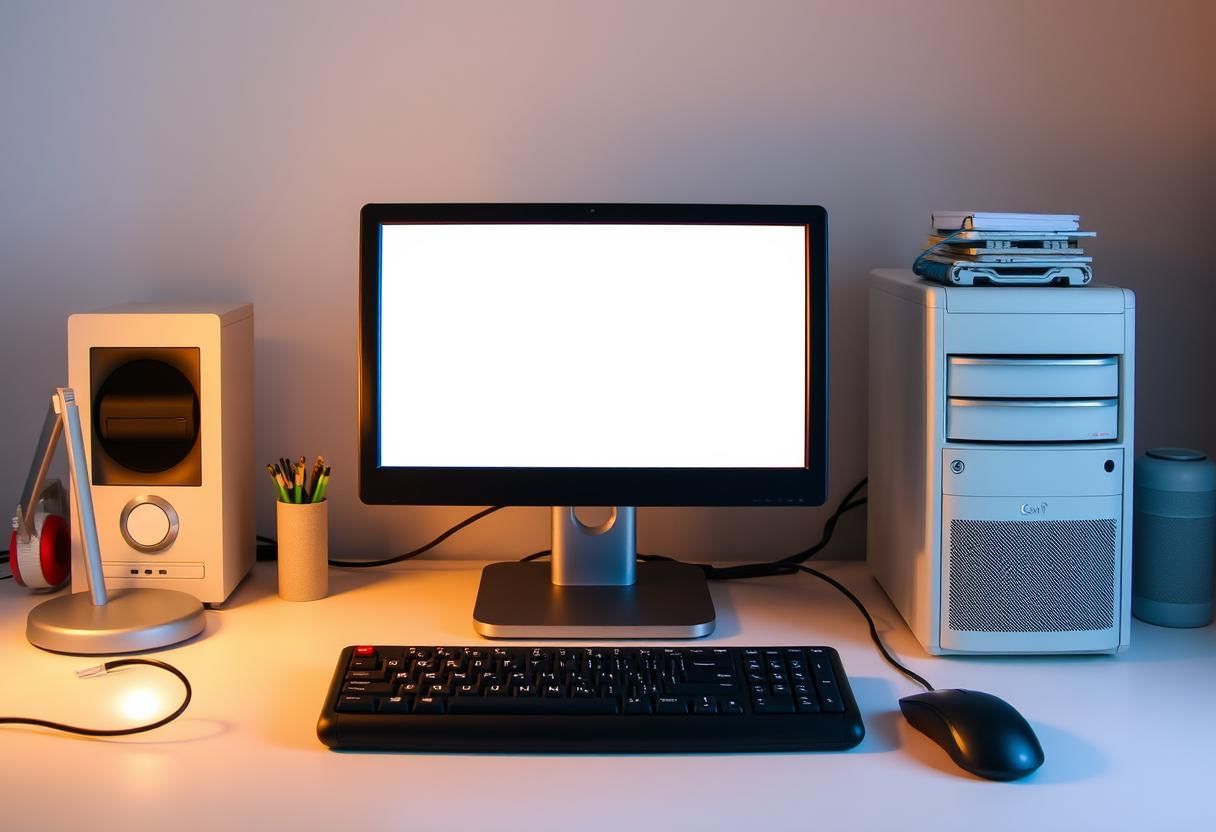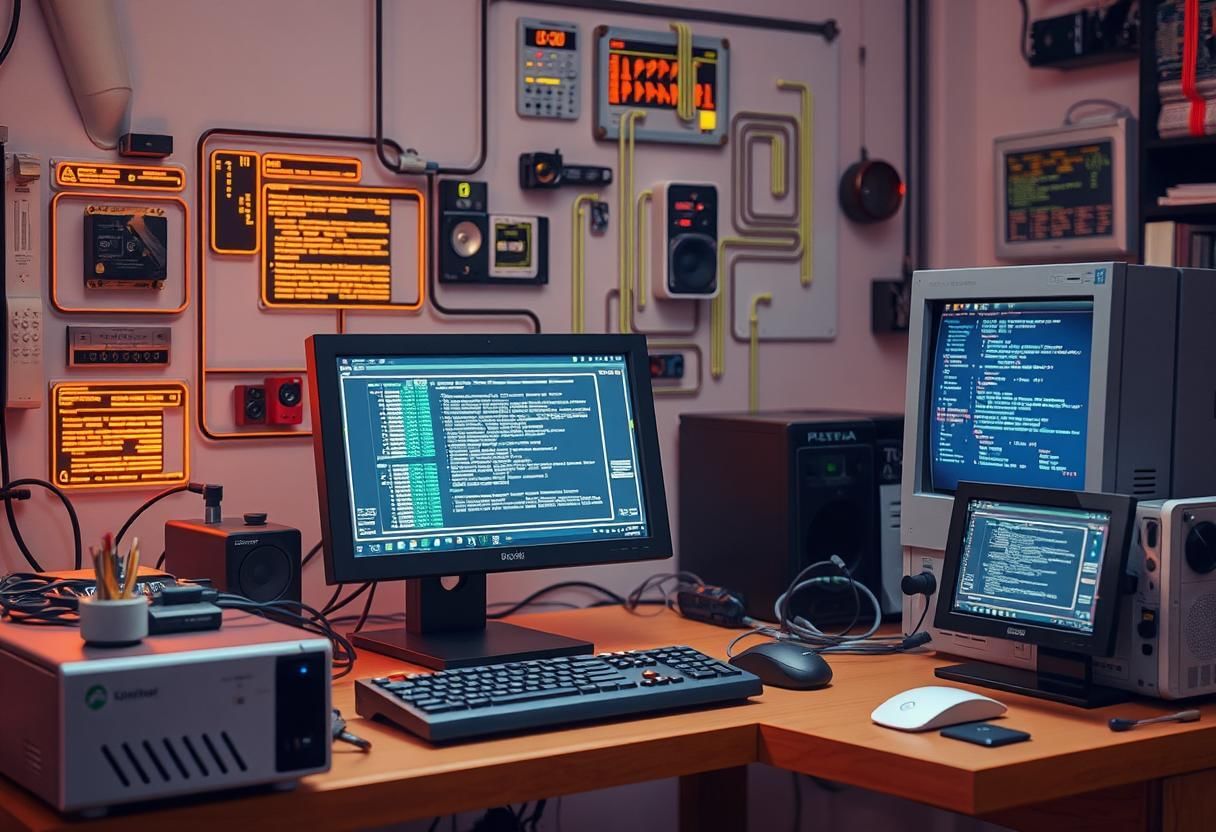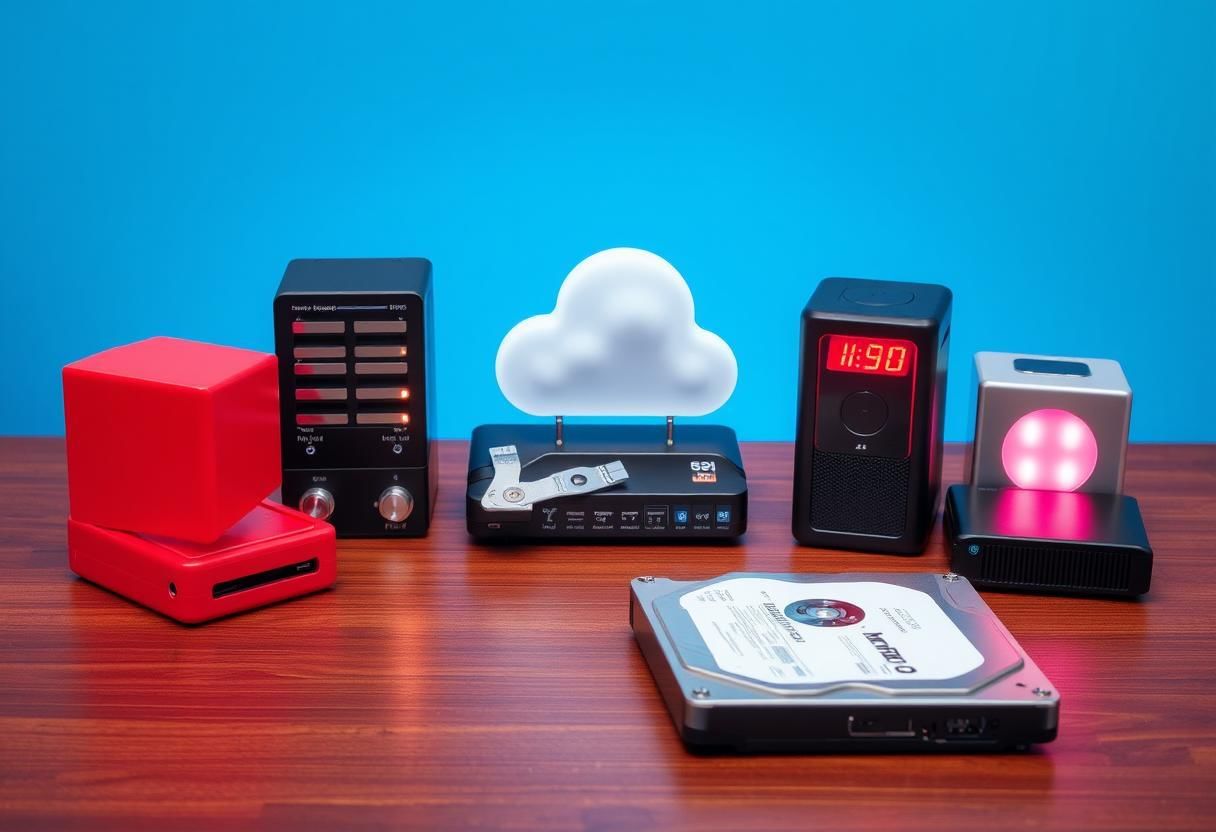Know Your Computer | Year 1 Computing IGCSE (Cambridge) - Class 1 PDF Download
1. Introduction to Electronic Devices
What is an Electronic Device?
An electronic device refers to any device that uses electrical circuits and components to perform specific tasks or operations. These devices utilize electricity for processing and communication, and they can be found in almost all modern technology. Examples of electronic devices include anything from small gadgets like smartphones to large systems like computers and televisions. Modern Gadgets
Modern Gadgets
Common Types of Electronic Devices:
- Computers: These are devices designed to process data, perform calculations, and execute programs. They can be used for a variety of tasks such as internet browsing, word processing, gaming, and multimedia creation.
- Tablets: Similar to computers but more portable, tablets are touchscreen devices used for tasks like reading, browsing, and entertainment. Tablets often run mobile operating systems like Android or iOS.
- Smartphones: These are portable, handheld devices that function as mobile phones but also offer a wide range of other features like internet browsing, messaging, multimedia, and app-based functionality.
- Smartwatches: Wearable devices that act as an extension of smartphones, offering functionalities such as health tracking, notifications, and basic app support.
2. Understanding the Basic Components of a Computer
Monitor
The monitor is the visual display unit of a computer. It is used to output the processed data from the CPU (Central Processing Unit) in a visual form. Monitors are available in various types, such as LCD (Liquid Crystal Display), LED (Light Emitting Diode), and OLED (Organic Light Emitting Diode). Each of these technologies offers different display quality, brightness, and energy efficiency. Computer setup
Computer setup
Keyboard
The keyboard is an input device that allows the user to type commands, text, and other data into the computer. It contains keys for letters, numbers, special characters, and function keys (e.g., F1-F12).
Types of Keys:
- Alphanumeric keys: These are the letters (A-Z) and numbers (0-9).
- Function keys (F1 to F12): Used for specific functions within software.
- Control keys (Ctrl, Alt): Used in combination with other keys to perform shortcuts.
- Arrow keys: Used to move the cursor or pointer on the screen.
- Enter/Return key: Used to execute commands or enter data.
Mouse
The mouse is a pointing device that allows the user to move a pointer or cursor on the screen to interact with various elements (icons, buttons, etc.).
Basic Mouse Functions:
- Left-click: Used to select or open items.
- Right-click: Opens a context menu with additional options.
- Scroll wheel: Allows the user to scroll through content on the screen (e.g., web pages, documents).
- Mousepad: A surface on which the mouse is moved to guide the pointer on the screen.
CPU (Central Processing Unit)
The CPU is the core component of the computer that performs all the processing tasks. It executes the instructions from programs and manages the operation of the other components of the computer. The CPU consists of two main parts:
- ALU (Arithmetic Logic Unit): Handles arithmetic and logical operations like addition, subtraction, comparisons, and more.
- CU (Control Unit): Directs the operation of the processor by fetching and decoding instructions from memory, coordinating the ALU and other components.
Clock: The CPU operates based on the clock speed, measured in GHz (Gigahertz), which determines how fast the CPU can process instructions.
3. Differentiating Between Input, Processing, and Output Devices

Input Devices
Input devices allow users to provide data or commands to the computer, enabling interaction with the system. Examples include:
- Keyboard: Used for typing text, numbers, and commands.
- Mouse: Used to select, drag, and interact with on-screen elements.
- Microphone: Captures sound and inputs it into the computer for audio processing.
- Scanner: Converts physical images or text into a digital format for the computer to process.
- Camera: Used for taking pictures or videos, which can be uploaded to the computer for editing.
Processing Devices
Processing devices interpret and execute the commands or data provided by the input devices. The CPU is the primary processing device. It processes data and performs calculations based on the input it receives. It also manages the flow of data between input, memory, and output devices.
GPU (Graphics Processing Unit)
A GPU is a specialized processor used for rendering graphics and video. It assists the CPU in handling visual data and is especially important for gaming and graphical design.
Output Devices
Output devices display or produce the results after the computer has processed the data. Examples include:
- Monitor: Displays visual output from the computer.
- Printer: Produces hard copies of digital documents and images.
- Speakers: Output sound from the computer, such as music, notifications, or video audio.
4. Recognizing Storage Devices
What is Storage?
Storage refers to the devices and systems used to store data and files for future access. It plays a critical role in the computer as it allows users to save files, applications, and operating systems. There are two types of storage:
There are two types of storage:
- Primary Storage: This refers to the temporary storage used by the CPU to store data that is actively being used (e.g., RAM (Random Access Memory)).
- Secondary Storage: Refers to long-term storage devices that retain data even when the computer is turned off.
Types of Storage Devices
Hard Disk Drive (HDD)
HDDs are mechanical storage devices that use magnetic disks to store data. They have a large storage capacity but are slower compared to newer storage technologies. HDDs are non-volatile, meaning they retain data even when power is turned off.
Solid-State Drive (SSD)
An SSD uses flash memory to store data, which makes it faster, more durable, and more efficient than an HDD. SSDs have no moving parts, making them less prone to mechanical failure and faster in accessing data. They are also non-volatile storage type, retaining data without power.
USB Drives (Flash Drives)
USB drives are portable, compact storage devices that use flash memory. They are commonly used to transfer files between devices or as backup storage. They are easy to carry and use across different computers with a USB port.
Optical Discs (CD/DVD)
Optical discs like CDs and DVDs store data using laser technology. Although they were once popular, they have largely been replaced by flash drives and cloud storage. Read-only (CD-ROM) or rewritable (CD-RW, DVD-RW) versions allow data to be written, erased, and rewritten.
Cloud Storage
Cloud storage refers to saving data on remote servers accessible via the internet. Popular services include Google Drive, Dropbox, and iCloud. It allows for easy access and sharing of files from any location with an internet connection.
--- This HTML format is structured with **H2** for chapter headings and **H3** and **H4** for sub-headings, making it ready for use in your blog. Let me know if you need further modifications!
|
12 docs|6 tests
|
FAQs on Know Your Computer - Year 1 Computing IGCSE (Cambridge) - Class 1
| 1. What are the basic components of a computer? |  |
| 2. How do I troubleshoot common computer issues? |  |
| 3. What is the difference between hardware and software? |  |
| 4. How can I improve my computer's performance? |  |
| 5. What is an operating system, and why is it important? |  |
















